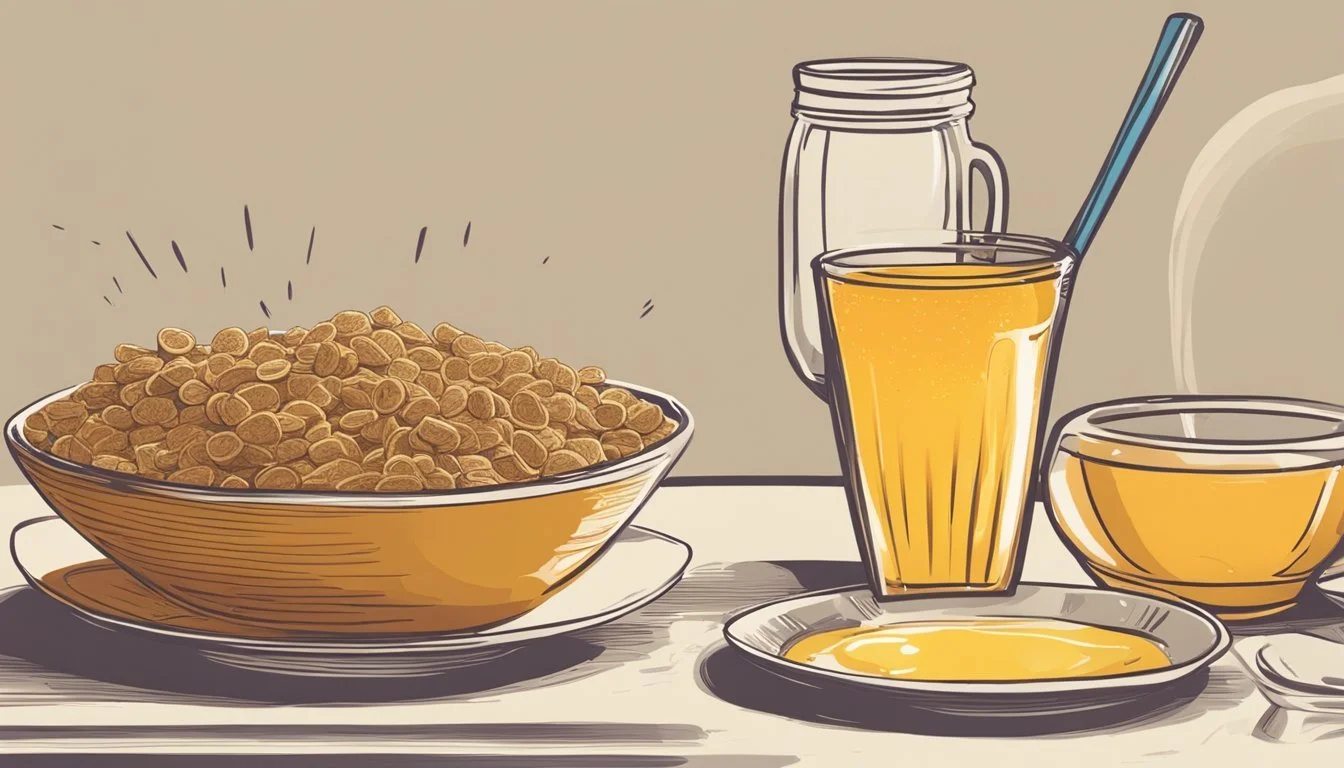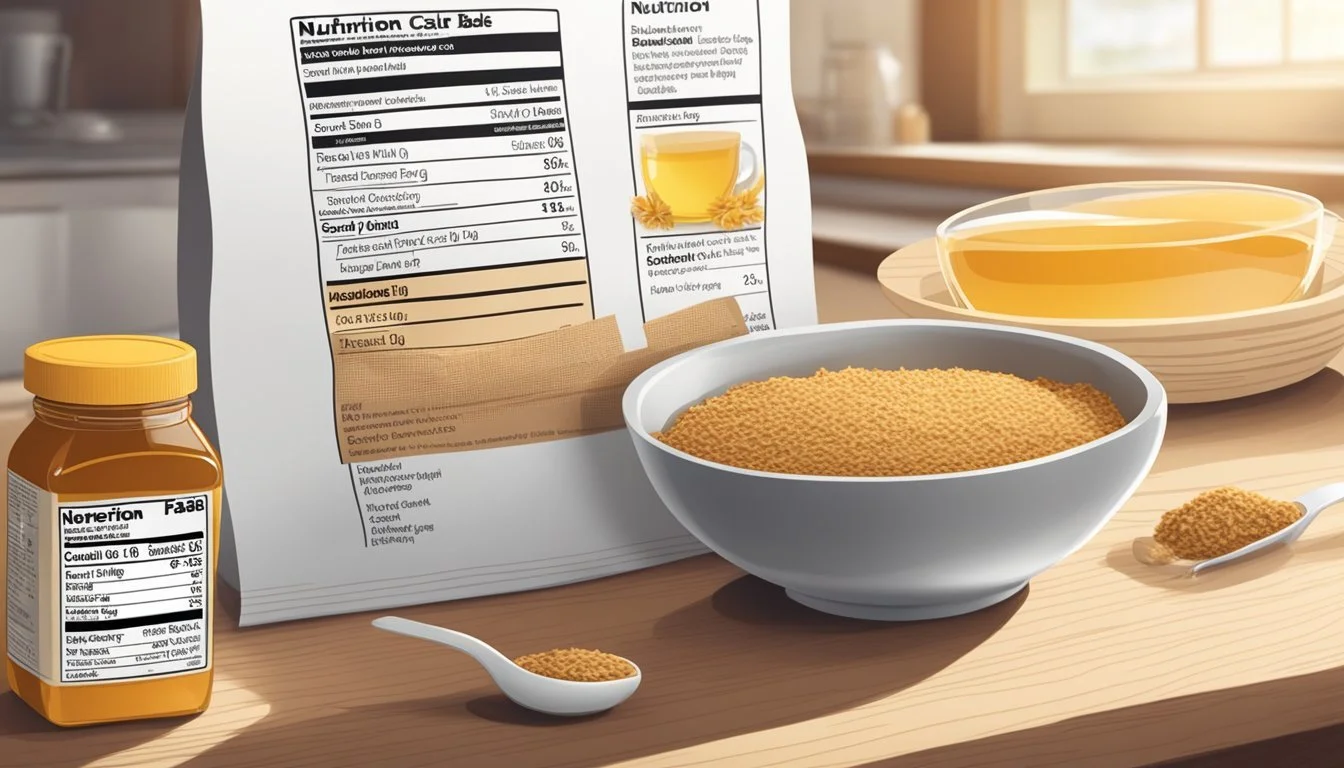All-Bran vs Honey Ohs!
A Nutritional Comparison Guide
This Article is Part of Our Breakfast Cereal Guide with Details on All-Bran Nutrition and Honey Ohs! Nutrition
Starting the day with a nutritious breakfast is crucial, and choosing the right cereal can make a significant difference. When comparing All-Bran and Honey Ohs, it's clear that All-Bran offers higher fiber content, making it potentially a better choice for digestive health. Honey Ohs, while sweeter and less fiber-rich, provide a satisfying start for those who prefer a more flavorful option.
All-Bran contains complex carbohydrates and a good amount of fiber, which aids digestion and keeps you full longer. On the other hand, Honey Ohs, despite their lower fiber content, are packed with complex carbohydrates and boast a sweet taste that can appeal to children and adults alike.
The decision between All-Bran and Honey Ohs ultimately depends on dietary needs and taste preferences. Those seeking a healthier, fiber-rich option might lean toward All-Bran, while those desiring a sweeter, tasty cereal may find Honey Ohs more appealing.
Cereal Overview
All-Bran and Honey Ohs! are popular cereals with distinctive qualities. One stems from Kellogg's focus on high-fiber content, while the other offers a sweet, crunchy texture from Quaker Oats.
History and Manufacturer
All-Bran is a product of Kellogg's, a company with a rich history dating back to 1906. Kellogg's has built a reputation for producing nutritious breakfast cereals designed to promote digestive health. All-Bran was introduced in 1916 to help consumers increase their daily fiber intake.
Honey Ohs! is produced by Quaker Oats, which became a part of PepsiCo in 2001. Known for their tasty and fun breakfast options, Quaker Oats introduced Honey Ohs! to provide a blend of sweetness and crunch, making it a favorite among children and adults alike.
Target Audience and Brand Positioning
All-Bran targets health-conscious individuals who prioritize nutrition, particularly those seeking to improve their fiber intake. The brand positions itself as a solution for digestive health, making it appealing to adults looking for functional benefits in their diet.
Honey Ohs! is crafted for a broader audience, including families and children, who enjoy a sweeter start to their day. Quaker Oats positions Honey Ohs! as a fun, tasty cereal with a unique texture, aiming to capture the interest of those who might prioritize taste over nutritional content.
Nutritional Breakdown
All-Bran and Honey Ohs each offer distinct nutritional profiles that cater to different dietary preferences and needs. This section provides a detailed comparison, focusing on their macronutrient content, micronutrient composition, and sugar and sodium levels.
Macronutrient Content
Calories and Fat:
All-Bran contains 80 calories per serving, with 1 gram of fat. Honey Ohs, with 120 calories per serving, doubles the fat content to 2 grams.
Protein:
All-Bran has 3 grams of protein per serving, which is triple the 1 gram found in Honey Ohs. This makes All-Bran a more protein-rich option.
Dietary Fiber and Carbohydrates:
All-Bran provides a significant 10 grams of dietary fiber per serving, thanks to its whole grain content. Honey Ohs only offers 1 gram of dietary fiber. Complex carbohydrates are more prevalent in All-Bran, aiding in prolonged energy release.
Micronutrient Composition
Vitamins:
All-Bran is fortified with essential vitamins, including Vitamin B12. This vitamin is crucial for red blood cell formation and neurological function. Honey Ohs contains fewer added vitamins comparatively.
Minerals:
All-Bran is rich in minerals like iron and magnesium. Each serving offers significant percentages of the daily values, with iron aiding in oxygen transport and magnesium supporting muscle and nerve function. Honey Ohs does include some minerals, but in lower amounts.
Manganese and Phosphorus:
Bran also has a higher content of manganese and phosphorus, which are vital for bone health and metabolism. The amounts in Honey Ohs fall short in comparison.
Sugar and Sodium
Sugar Content:
Honey Ohs has a higher sugar content at 9 grams per serving, catering to those with a sweeter palate. In contrast, All-Bran contains only 2 grams of sugar per serving, making it a better choice for those monitoring their sugar intake.
Sodium Levels:
All-Bran contains 260 milligrams of sodium per serving. Honey Ohs has slightly less, with 220 milligrams. While both cereals have sodium, All-Bran has a higher amount.
Overall, when choosing between All-Bran and Honey Ohs, dietary goals such as fiber intake, sugar consumption, and vitamin needs should guide the decision-making process. Each cereal caters to different nutritional priorities, providing options for a variety of dietary preferences.
Health Implications
Both All-Bran and Honey Ohs provide nutritional benefits but also come with some concerns. Each cereal contains unique ingredients that can impact health in different ways, which we'll explore further below.
Benefits of High Fiber
All-Bran is high in dietary fiber, particularly insoluble fiber, which aids digestion and prevents constipation. This makes it an excellent choice for improving gut health.
High fiber intake can also contribute to weight loss by promoting satiety and reducing total caloric intake. The FDA recommends a daily fiber intake of about 25-30 grams, which can be achieved by incorporating high-fiber foods like All-Bran into your diet.
Honey Ohs contain less fiber but still provide a modest amount of this important nutrient. Fiber is essential for maintaining blood sugar levels and supporting heart health.
Concerns with Sugar Content
One significant concern with both cereals is their sugar content. All-Bran has 6-12 grams of sugar per serving, which may contribute to weight gain and increase the risk of developing chronic diseases.
Honey Ohs have a high sugar content, which can cause a sugar crash and lead to fluctuations in energy levels. This cereal is also known for containing synthetic colors and flavors, which may not be ideal for those seeking a more natural diet.
Consuming high-sugar cereals regularly can be problematic, as they are often considered empty calories and may result in weight gain without providing substantial nutritional value.
Overall Diet Considerations
When choosing between All-Bran and Honey Ohs, it’s essential to consider your overall diet. Both cereals provide complex carbohydrates that offer energy, but their other nutritional profiles differ significantly.
All-Bran is fortified with added vitamins and minerals, enhancing its role in a healthy breakfast. On the downside, its sugar and potential absent protein content might need balancing with other dietary choices.
Honey Ohs also provide fortified vitamins and minerals, but the additional synthetic additives may cause hesitation for health-conscious individuals. They can be part of a balanced diet when consumed in moderation, especially if paired with protein-rich foods.
To make the healthiest choice, consider your dietary needs and individual health goals, ensuring that either cereal complements a balanced and nutritious diet.
Comparative Analysis
Comparing All-Bran and Honey Ohs! reveals key differences in their nutritional profiles. The analysis also extends to comparisons with other popular cereals like Cheerios and Shredded Wheat.
All-Bran versus Honey Ohs! Composition
All-Bran has a notable amount of dietary fiber. Each serving includes 7 grams of complex carbohydrates and provides 50 calories. Additionally, it offers about 8 grams of protein and is relatively low in sugar.
Honey Ohs! are higher in complex carbohydrates, with 12 grams per serving. They also contain higher sugar content. Protein levels in Honey Ohs! are lower, at about 1 gram per serving. This cereal may have a slight edge in calories, with a typical serving providing around 110 calories.
A comparison table:
Nutrient All-Bran (Per Serving) Honey Ohs! (Per Serving) Complex Carbohydrates 7 grams 12 grams Fiber High Moderate Sugar Low High Protein 8 grams 1 gram Calories 50 110
Other Breakfast Cereal Comparisons
Cheerios and Honey Nut Cheerios are popular alternatives. Cheerios contain about 3 grams of fiber and are low in sugar. Honey Nut Cheerios add sweetness but increase the sugar content significantly.
Honey Bunches of Oats combines grains and nuts, making it higher in protein compared to Honey Ohs! or All-Bran. It has about 2 grams of protein and contains moderate amounts of sugar and fiber.
Shredded Wheat and Weetabix are known for their high fiber content, with each serving providing around 6-8 grams of fiber. These cereals are lower in sugar and usually contain about 4 grams of protein per serving.
A quick comparison:
Cereal Fiber (grams) Sugar (grams) Protein (grams) Calories Cheerios 3 Low 3 100 Honey Nut Cheerios 3 High 2 110 Honey Bunches of Oats 2 Moderate 3 120 Shredded Wheat 6-8 Low 4 160 Weetabix 7 Low 4 150
These comparisons highlight the diverse nutritional options available, varying in fiber, sugar, protein, and caloric content.
Consumer Insights
Consumers often evaluate cereals based on texture, flavor, price, and ratings. These factors significantly influence purchasing decisions and overall satisfaction with the product.
Texture and Flavor Experience
All-Bran is known for its coarse, fibrous texture and nutty bran flavor. It is especially favored by those looking for a hearty, health-conscious option. The cereal's texture holds up well in milk, maintaining some crunchiness.
Honey Ohs! features bite-sized Os with a touch of sweetness and a crunchy middle. This cereal provides a more diverse texture profile, combining crispness with a softer center. The malt and real honey flavor appeal to those with a sweet tooth.
Purchasing Factors and Price Comparison
Consumers often weigh price heavily in their cereal choices. All-Bran typically comes in at a higher price point per serving, likely due to its high fiber content and health benefits. An average serving size is 1 cup (40g) with about 160 calories.
Honey Ohs! is generally more affordable. A serving size is 1 cup (40g) as well, but often includes more complex carbohydrates, approximately 12 grams per serving. The price of Honey Ohs! is appealing to budget-conscious shoppers looking for a flavorful, but less health-oriented, option.
Cereal Ratings and Recommendations
All-Bran regularly ranks high among cereals aimed at health-conscious consumers. Its high dietary fiber content and minimal use of artificial flavors score points for health experts. This cereal is often recommended for those focused on digestive health and maintaining a balanced diet.
Honey Ohs! tends to receive praise for taste and texture, particularly from younger demographics and families. The mix of crunchiness and honey sweetness earns it a good rating among those seeking flavorful breakfast options. Dietitians might not rate it as highly due to higher sugar content and lower fiber.
Dietary Considerations
When comparing All-Bran and Honey Ohs, it's critical to examine their nutritional components, including fiber content and allergen information. Each cereal offers unique dietary benefits and potential drawbacks.
Gluten-Free and Allergy Information
Gluten-Free Status: All-Bran and Honey Ohs both contain grains that are not gluten-free. All-Bran is primarily made from whole grain wheat, which contains gluten. Similarly, Honey Ohs include whole grain oats and other ingredients that are not suitable for those with celiac disease or gluten sensitivity.
Common Allergens: All-Bran often includes whole grain wheat and may contain traces of other allergens like nuts. Honey Ohs may contain whole grain oats and other ingredients like oat bran, which can pose allergen risks. It's essential to check packaging for potential cross-contamination with nuts or dairy to ensure safety for those with allergies.




